14 Wild Animals in Zanzibar [Wildlife in Zanzibar]
Want to know more about the wildlife in Zanzibar?
Discover 14 wild animals in Zanzibar in this post, as well as interesting facts about them. 🇹🇿
Learn All About Zanzibari Animals
Ready to learn all about Zanzibari animals?
I’ve always been fascinated by animals and by how they can be so different from one country to another. In this guide, we’ll focus on the many animals Zanzibar has on the land, in the sky, and underwater.
I’ve split the guide into 5 categories:
- Native animals from Zanzibar
- Endangered animals of Zanzibar
- What is the national animal of Zanzibar?
- How many animals native to Zanzibar?
- Are there snakes in Zanzibar?
Let’s dive in right away with our first category!
Native Animals from Zanzibar
Zanzibar is an African island country located in the eastern part of the continent, off the coast of Tanzania. It is an autonomous Tanzanian region, is known for its tourism, raffia palms and spices, has a particularly important marine ecosystem which greatly helps its economy, is made of 2 main and large islands and multitudes of smaller ones, and used to be a Portuguese and a British colony. It is surrounded by the Indian Ocean and is located 25 to 50 km / 16 to 31 mi off the coast of mainland Africa, and its capital and largest city is Zanzibar City, which counts more than 246,000 inhabitants (but more than 501,000 if you include the metropolitan area).
An interesting part of the country that I wanted to tackle is its wildlife. In light of that, I have listed the best of it, and I hope you will love learning what animals live in Zanzibar.
Here’s the Zanzibar animals list.
1. Zanzibar red colobus
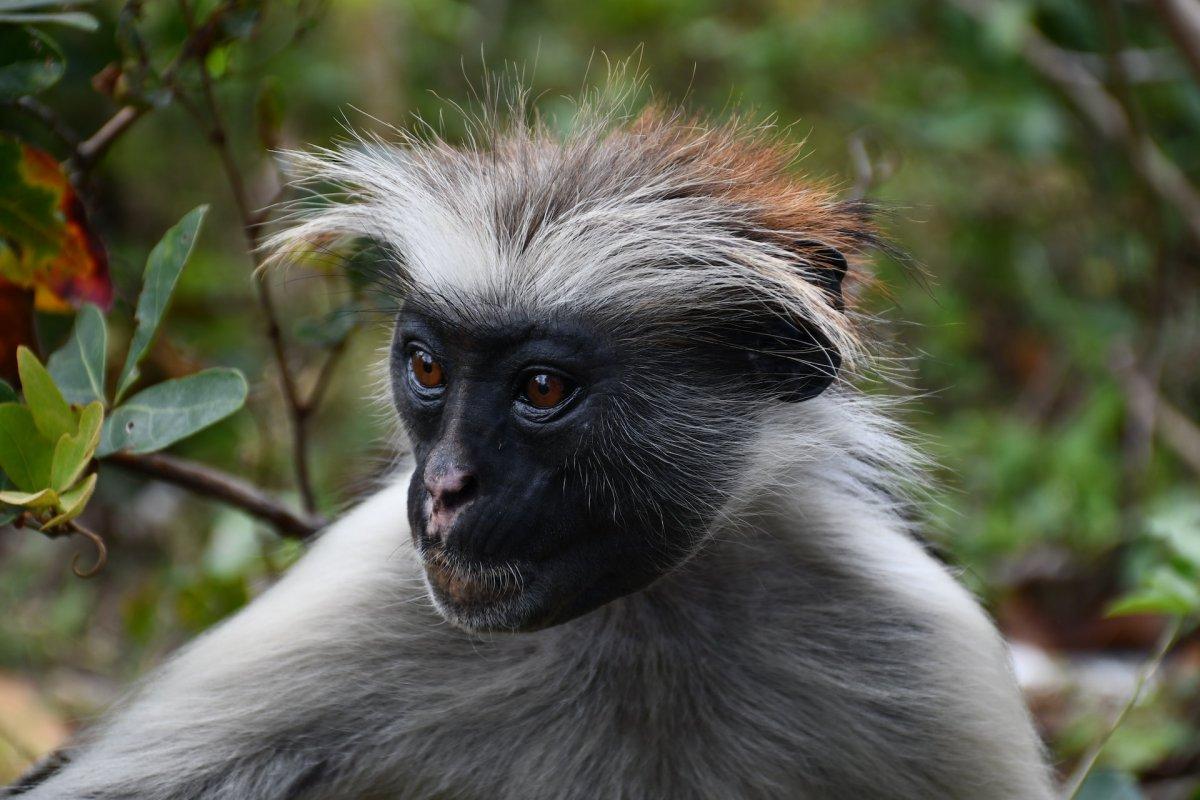
- Name: Zanzibar red colobus
- Scientific name: Piliocolobus kirkii
- Conservation status:
The Zanzibar red colobus, also known as Kirk’s red colobus, is a species of colobus monkey endemic to Unguja, the main island of Zanzibar. It is the national animal of the country and is a local pride, although it is seriously on the decline, and suffers from habitat loss and hunting.
This monkey has a long tail used for balance, but it is not prehensile. It has a round body shape and a small skull and inhabits three forests of the country, usually in drier, forest areas.
2. Zanzibar servaline genet
- Name: Zanzibar servaline genet
- Scientific name: Genetta servalina archeri
- Conservation status:
The Zanzibar servaline genet is, as its name suggests, another species endemic to the island of Zanzibar. It was recently discovered (during the 1990s), and its conservation status is thus uncertain. It is most closely related to Lowe’s servaline genet, found in mainland Tanzania, from which it probably diverged since the end of the last ice age when Zanzibar was separated from mainland Africa by rising sea levels!
Not much is known about this animal, but it most likely lives in the dry scrub and groundwater forests of Zanzibar.
3. Zanzibar leopard
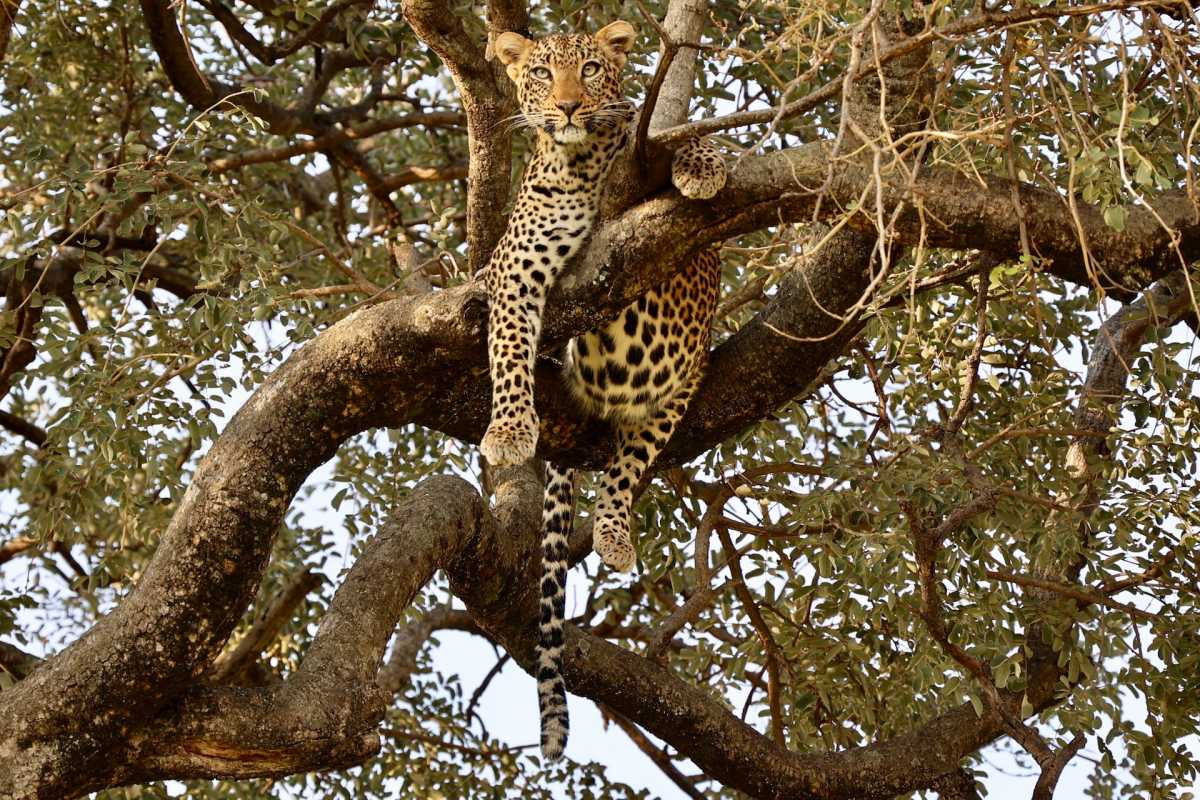
- Name: Zanzibar leopard
- Scientific name: Panthera pardus pardus
- Conservation status:
The Zanzibar leopard is a very small subpopulation of the African leopard endemic to Unguja Island. After intense persecution and habitat loss, it was considered extinct, but a specimen was recorded by a camera trap in 2018, renewing hopes for the survival of this unique species.
Locally, the Zanzibar leopard is thought to be sent by witches to harm and harass villagers. In fact, the attacks of this leopard were due to human expansion and encroachment, and the number of conflicts quickly rose during the 20th century.
4. Bushy-tailed mongoose
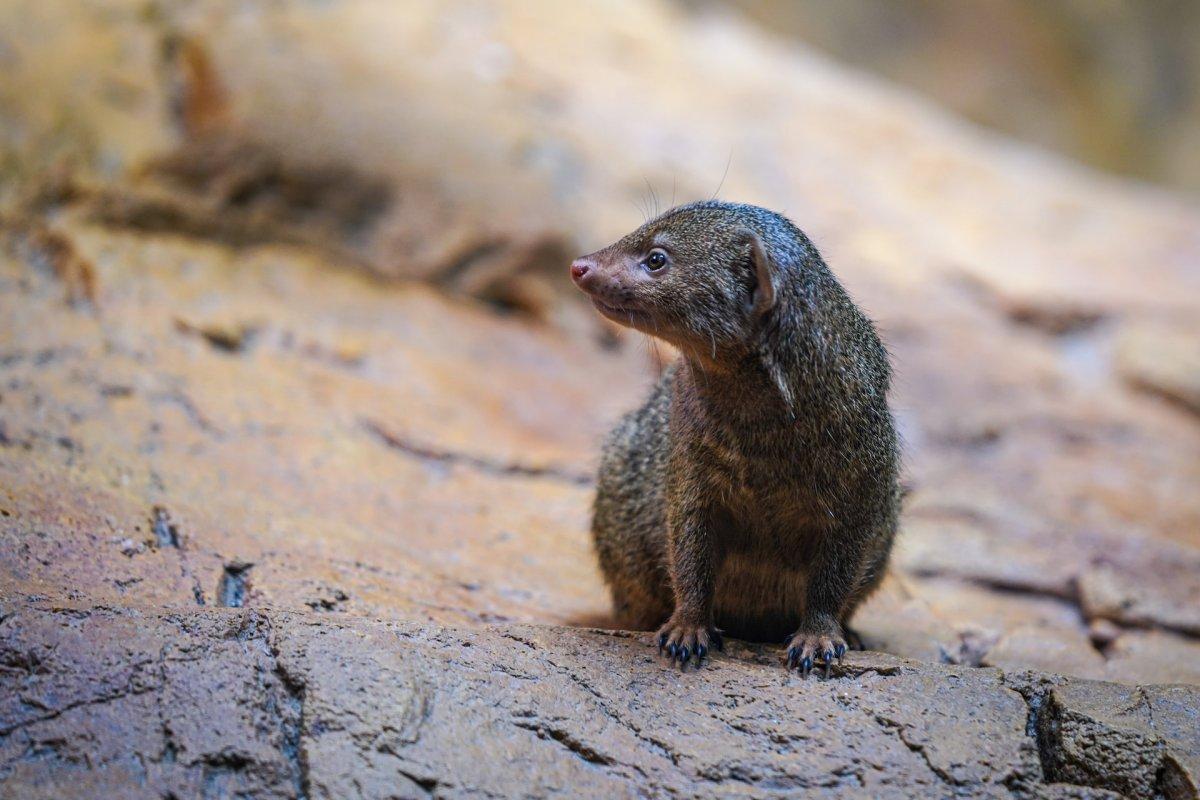
- Name: Bushy-tailed mongoose
- Scientific name: Bdeogale crassicauda
- Conservation status:
The bushy-tailed mongoose is a species of mammal found in central and eastern Africa, from Kenya to Zanzibar and Mozambique. In Zanzibar, it inhabits the coral rag forest of the southeastern coast of Unguja, as well as the deep soil region in western Pemba Island.
Due to its small size and stealthy habits, the bushy-tailed mongoose is not well known. It inhabits areas near bodies of water with dense cover and lives in forests and open shrublands.
5. Blue duiker
- Name: Blue duiker
- Scientific name: Philantomba monticola
- Conservation status:
The blue duiker is a small species of antelope native to central, southern, and eastern Africa. It is the smallest duiker and one of the smallest antelopes in the world. It has a dark tail and short, spiky horns which are about 5 cm / 2 in long and hidden in the hair.
This mammal feeds on foliage, flowers, bark, and fallen fruits, and is active during the day. It usually stays within the forest fringes and is both cautious and secretive.
6. Black heron
- Name: Black heron
- Scientific name: Egretta ardesiaca
- Conservation status:
The black heron, also known as the black egret, is a species of heron native to sub-Saharan Africa. It is known for its tendency to use its wing to form a canopy when fishing: this is actually creating shade, which attracts fish!
It inhabits bodies of water, where it looks for fish and other aquatic insects, amphibians, and crustaceans. It builds its nest with twigs and places it over water in trees, reed beds, and bushes.
7. Dugong

- Name: Dugong
- Scientific name: Dugong dugon
- Conservation status:
The dugong is a large species of sirenian, an aquatic mammal closely related to manatees. It inhabits much of the Indo-West Pacific, and although endangered, it can still be found in the waters of Zanzibar.
This animal feeds on seagrass and has been hunted for thousands of years for both its meat and oil. In fact, traditional hunting is still important nowadays in some Pacific Islands, but bigger threats include pollution and habitat degradation.
8. Pemba scops owl
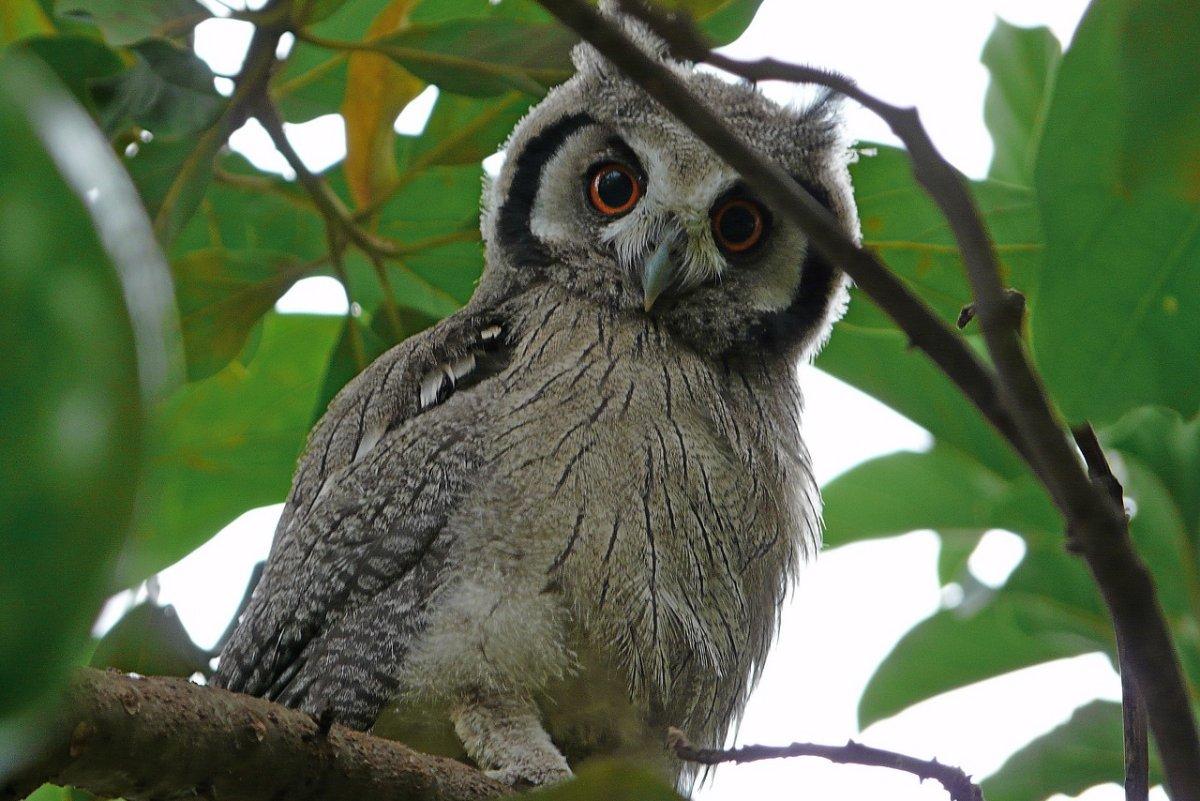
- Name: Pemba scops owl
- Scientific name: Otus pembaensis
- Conservation status:
The Pemba scops owl is a medium-sized species of owl endemic to Pemba Island in Zanzibar. It has short ear tufts and can be either brown or bright rufous. Interestingly enough, it calls in pairs, and male calls are shorter and lower in pitch.
This owl can be found in all wooded habitats of the island and is most common in native forests, but it suffers from its restricted area, habitat loss, and hunting.
9. Rose-ringed parakeet
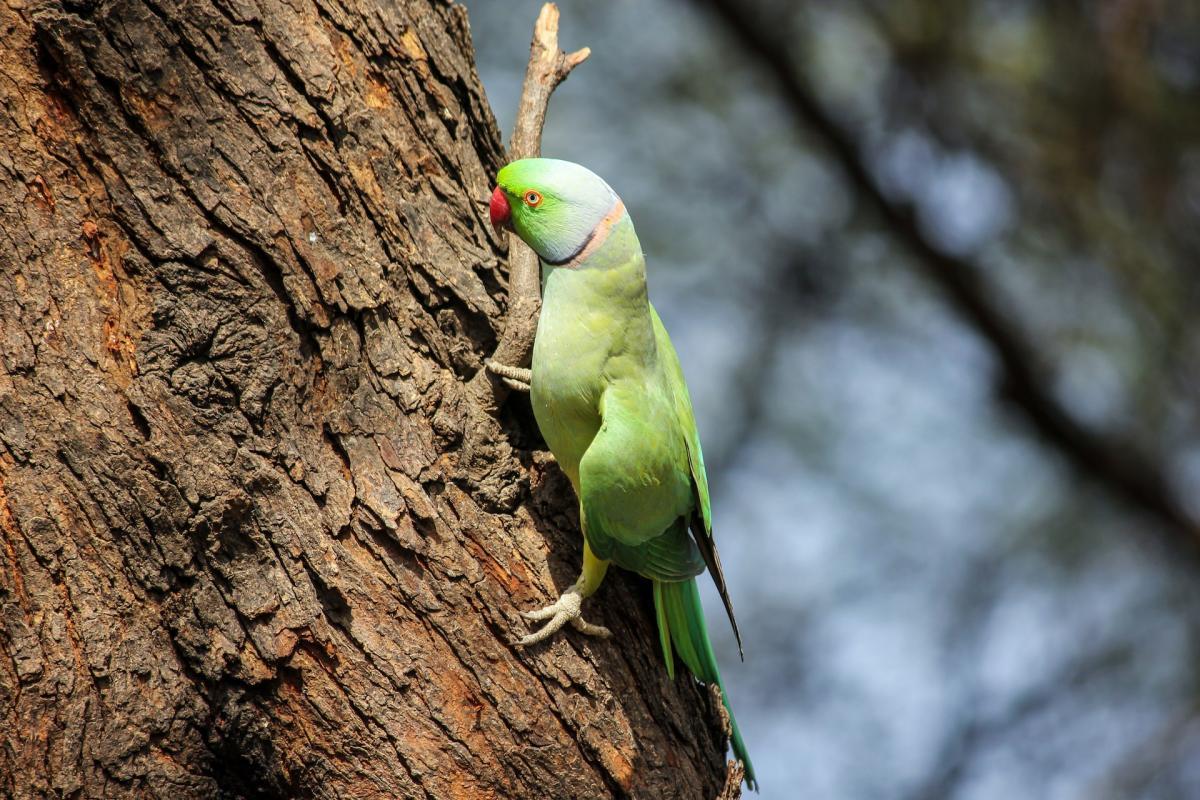
- Name: Rose-ringed parakeet
- Scientific name: Psittacula krameri
- Conservation status:
The rose-ringed parakeet, also known as the Indian ringneck parrot or the ring-necked parakeet, is a medium-sized species of parrot native to Africa and the Indian subcontinent and introduced into many other countries in the world where it is a popular pet species, which is why it is considered of least concern.
In Zanzibar, the rose-ringed parakeet is an introduced species, and it contributes to the country’s incredibly diverse avian wildlife.
10. Coconut crab
- Name: Coconut crab
- Scientific name: Birgus latro
- Conservation status:
The coconut crab, also known as the palm thief or the robber crab, is the largest terrestrial crab and arthropod in the world, reaching up to 1 m / 3 ft 3 in in width, from one leg to another. It is known for its tendency to climb on palm trees, break open coconuts with its large, powerful claws and feed on them.
This crab can mostly be found on Pemba Island in Zanzibar.
11. House crow
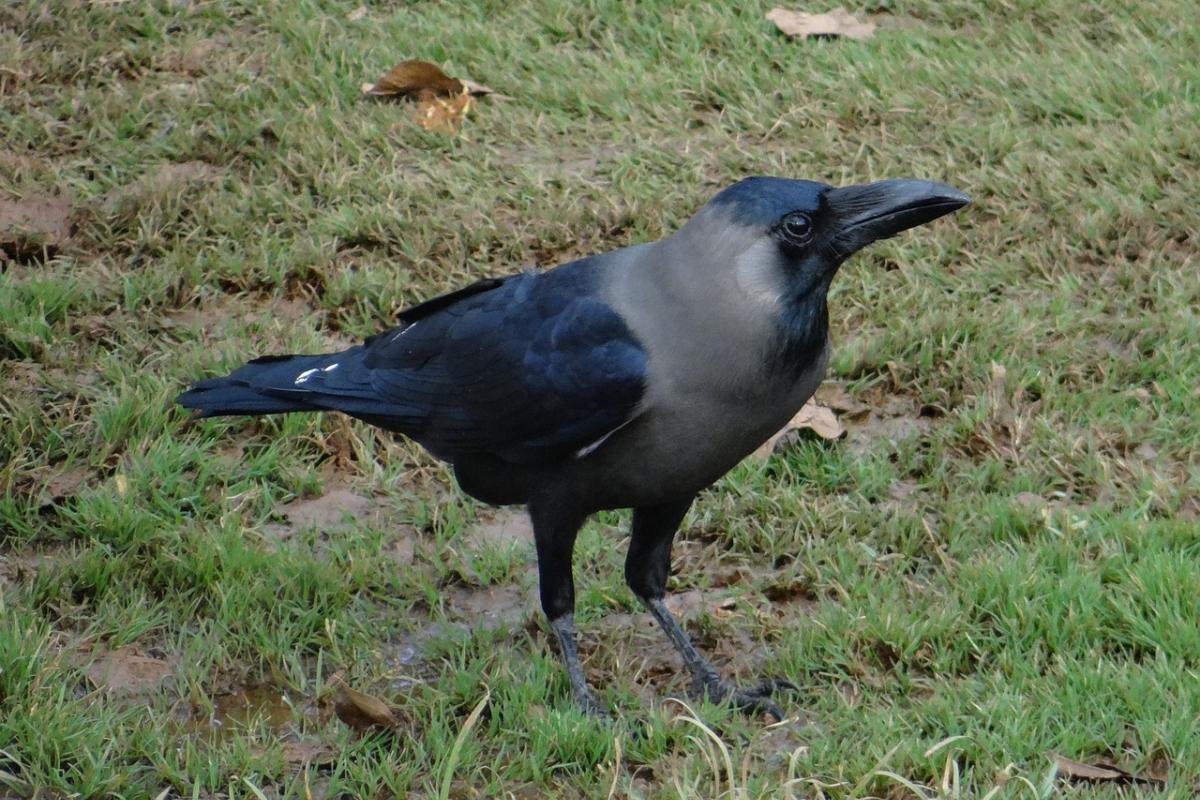
- Name: House crow
- Scientific name: Corvus splendens
- Conservation status:
The house crow, also known as the Colombo crow, the Indian grow or the gray-necked crow, is a common species of bird around the Indian subcontinent, and it has been introduced to Zanzibar and many other countries in the world, where it arrived by shipping. In fact, Zanzibar was one of the first African countries to host the house crow, in around 1897.
This crow can be particularly invasive, and is able to survive and even thrive alongside humans.
12. Blue waxbill
- Name: Blue waxbill
- Scientific name: Uraeginthus angolensis
- Conservation status:
The blue waxbill, also known as the blue-breasted cordon-bleu, the Angola cordon-bleu, the southern blue waxbill, or the blue-breasted waxbill, is a common species of bird found in southern Africa. It is also commonly kept as a pet and was named after its unusually blue underparts.
When it comes to feeding, the blue waxbill can eat grass seeds, as well as insects, fallen fruit, and termites.
13. Crested francolin
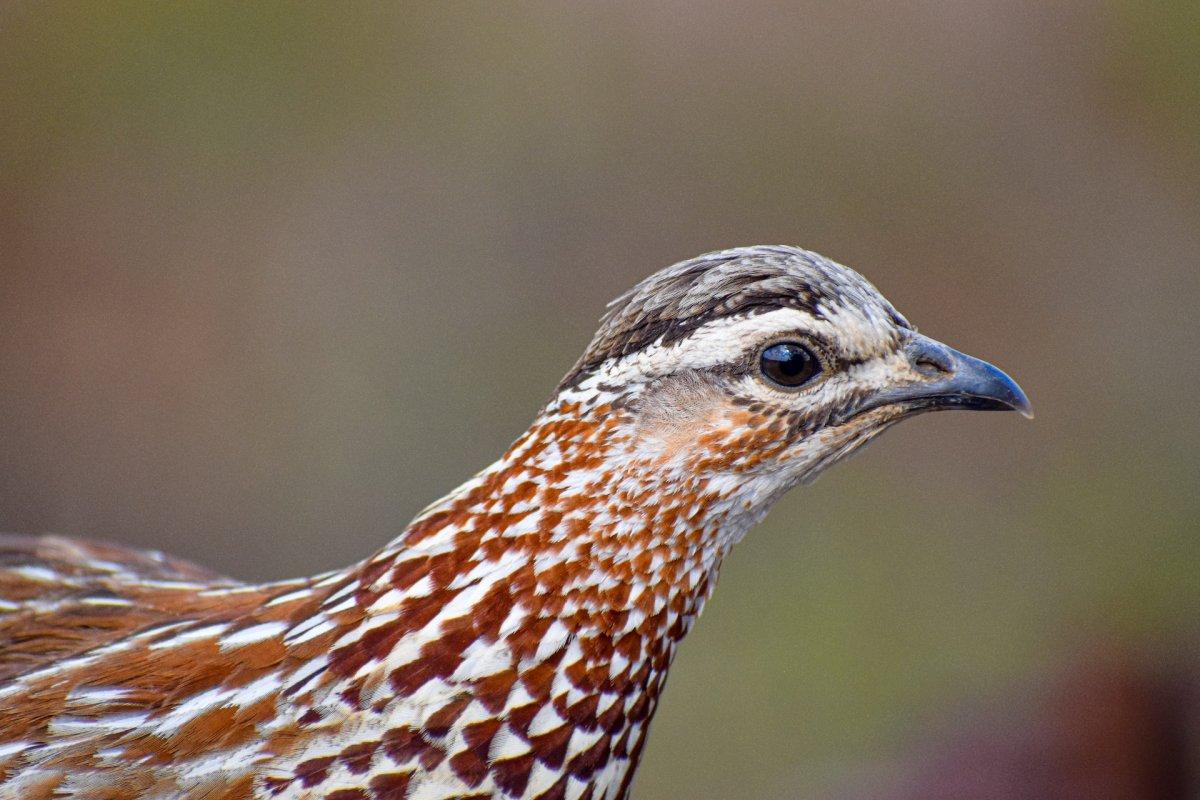
- Name: Crested francolin
- Scientific name: Ortygornis sephaena
- Conservation status:
The crested francolin is a species of pheasant native to central, southern, and eastern Africa. Although it is globally considered of least concern, it might have already disappeared from the archipelago of Zanzibar.
This species is further divided into several subspecies, including Kirk’s francolin. It is a large, terrestrial animal, closely related to and grouped with the gray francolin and the swamp francolin.
14. Gray-headed lovebird
- Name: Gray-headed lovebird
- Scientific name: Agapornis canus
- Conservation status:
The gray-headed lovebird, also known as the Madagascar lovebird, is a small species of parrot native to Madagascar and spread to other countries in the world, including Zanzibar. It is one of the smallest species of the lovebird genus, measuring only about 13 cm / 5 in long, and while the adult female is entirely green, males are mostly pale gray, with a green lower half of the body.
This bird is a strong flier and can fly very quickly and effortlessly.
—
So there you have them, these were my 14 wild animals in Zanzibar. I hope you enjoyed this list and that you learned something new today.
In case you want to learn more about animals in the country, feel free to keep reading, as I still have lots of things to tell you about:
Endangered Animals of Zanzibar
This is definitely the saddest part of the list, but it is very important to raise awareness. Because of this, let’s go through the list of endangered animals in Zanzibar.
Here are the animals in danger of extinction in Zanzibar.
- Pangani haplo
- Labeo worthingtoni
- White-backed vulture
- Whitespotted wedgefish
- Oceanic whitetip shark
- Long-billed forest warbler
- Slender-snouted crocodile
- and 106 more…
- Spinetail devil ray
- Spiny-sided chameleon
- Sokoke scops-owl
- Udzungwa forest partridge
- Tanzania screeching frog
- and 131 more…
To see the full list of endangered species in Zanzibar, head over to the International Union for Conservation of Nature’s Red List.
What is the National Animal of Zanzibar?
The national animal of Zanzibar is the Zanzibar red colobus.
There are several species endemic to Zanzibar, but it is the Zanzibar red colobus that symbolizes the country. It is endemic to the main island of the archipelago (Unguja) and is sometimes called Kirk’s red colobus.
This primate has a decreasing population trend and raises serious concerns among conservationists. It has been declared Zanzibar’s national animal in hopes to save it and to raise awareness, especially among tourists.
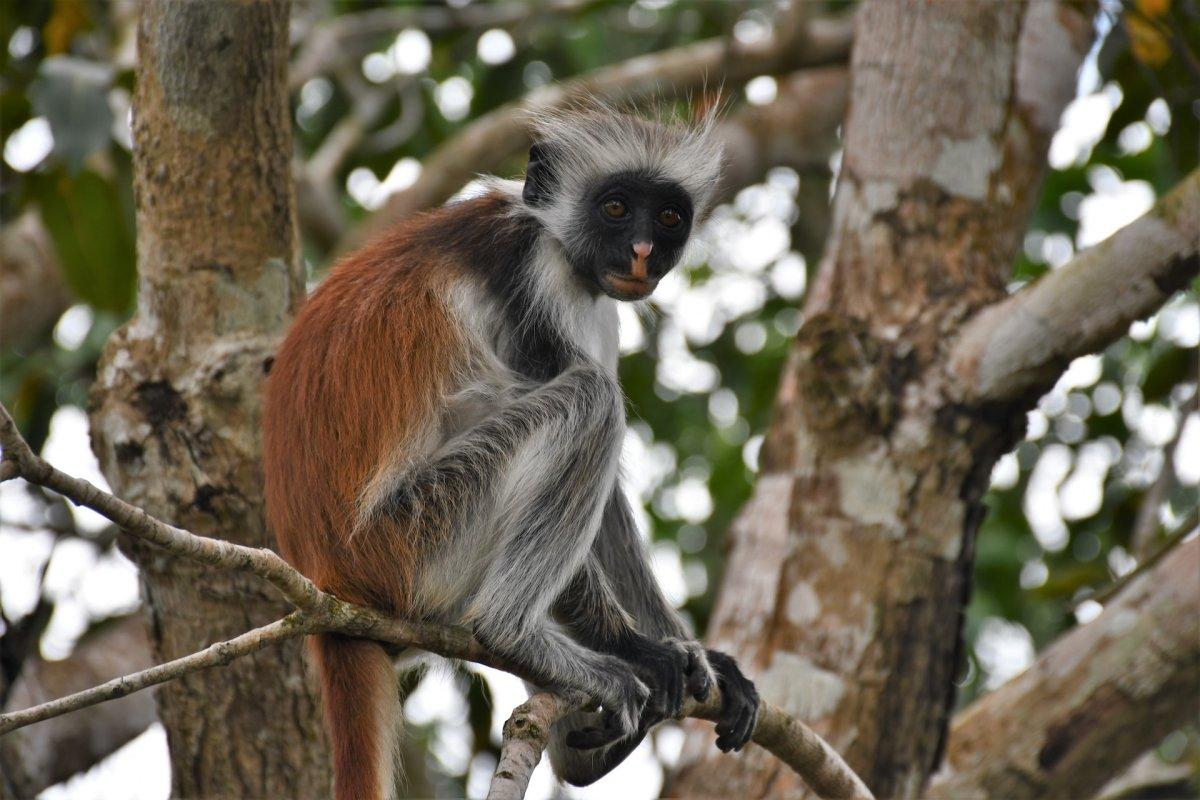
How Many Animals Native to Zanzibar?
What is the diversity of native animals in Zanzibar?
Let’s look at the total number of species of Chordata (mammals, birds, fishes, and reptiles).
Total number of animal species in Zanzibar: 4,177 (14,205 in total in sub-Saharan Africa) including the rest of Tanzania’s wildlife.
Are there snakes in Zanzibar?
Yes, snakes are definitely plentiful in Zanzibar, even in rural and urban areas, as well as in large, touristic hotels, so you should definitely be careful! Lots of them are also venomous, and some require immediate medical assistance.
Because Zanzibar is an archipelago, it is also home to some sea snakes, which are even more venomous than their terrestrial counterparts, but they rarely come ashore.
More About Animals in the World!
Loved these Zanzibar animal facts? Want to see what animals live in other countries?
Then check out these posts:
Or click here to see ALL the facts up on the blog! Spoiler alert: there’s A LOT of them.
Share the knowledge! Click on the buttons below to share information about these famous animals in Zanzibar with your friends, and help them learn more about the world 🙂
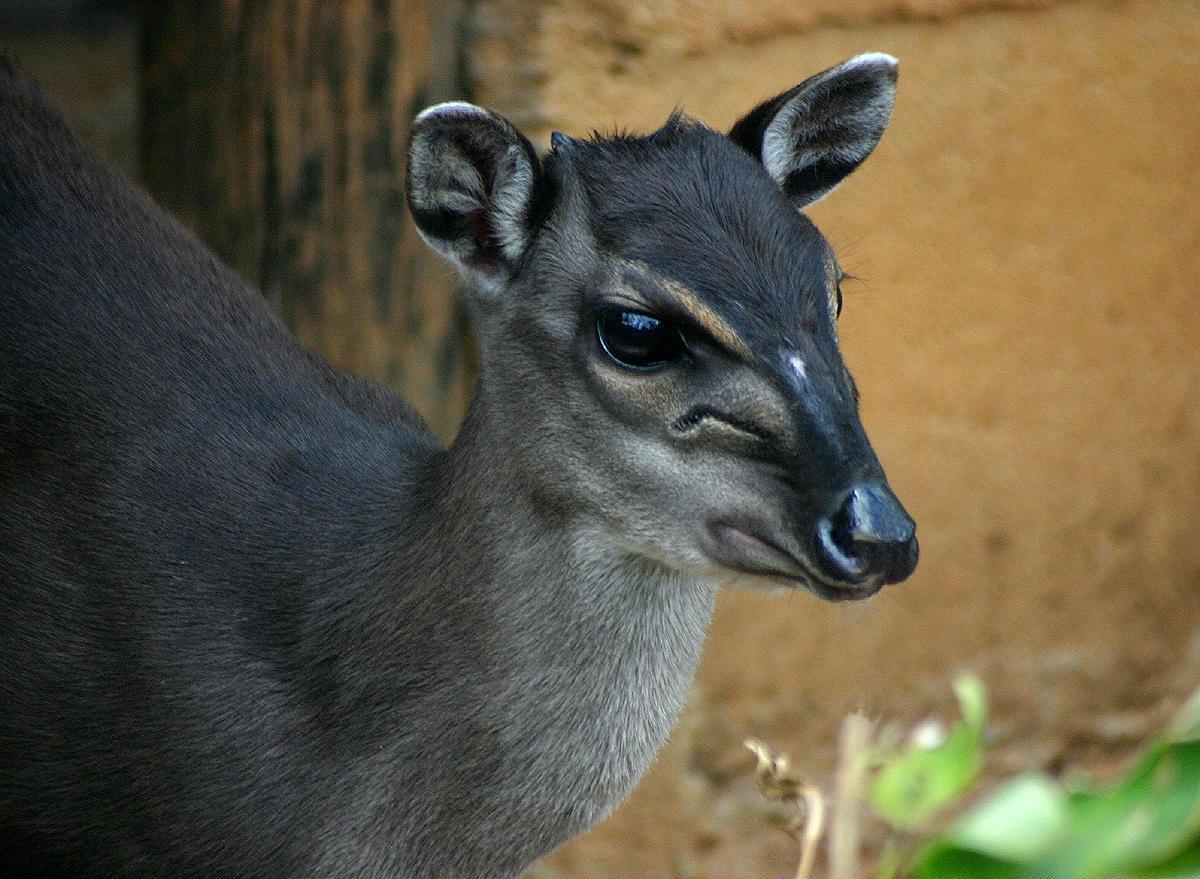
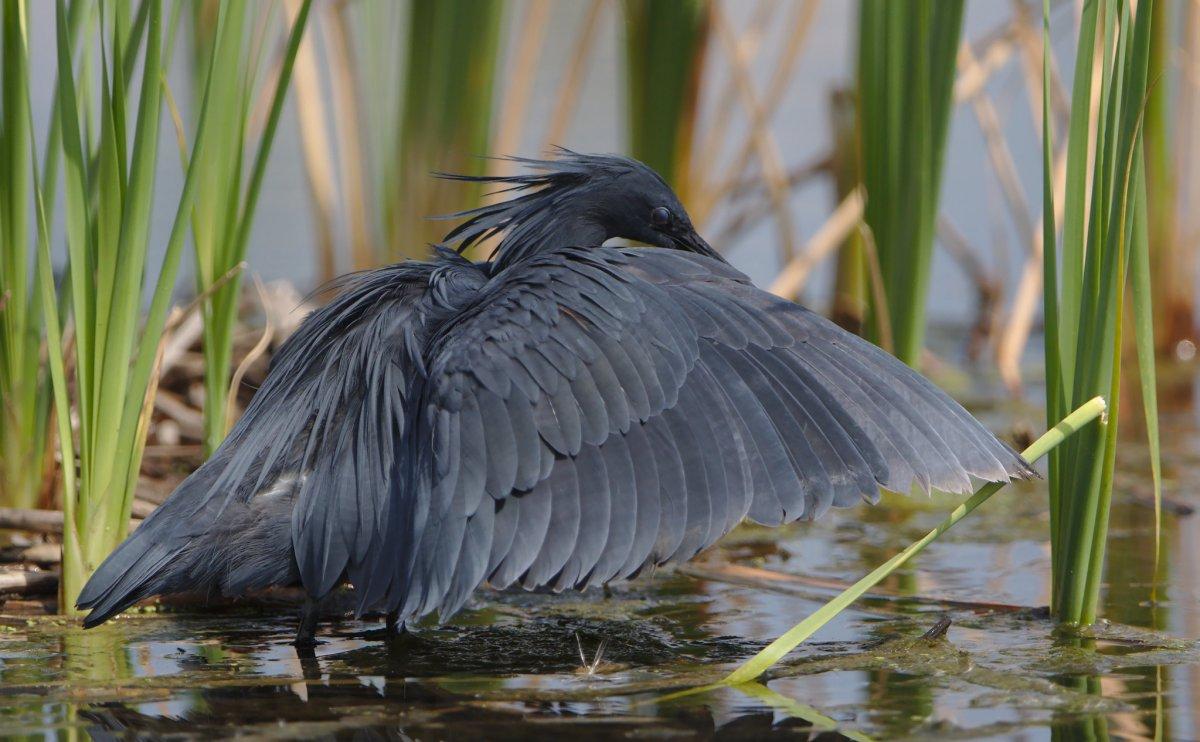
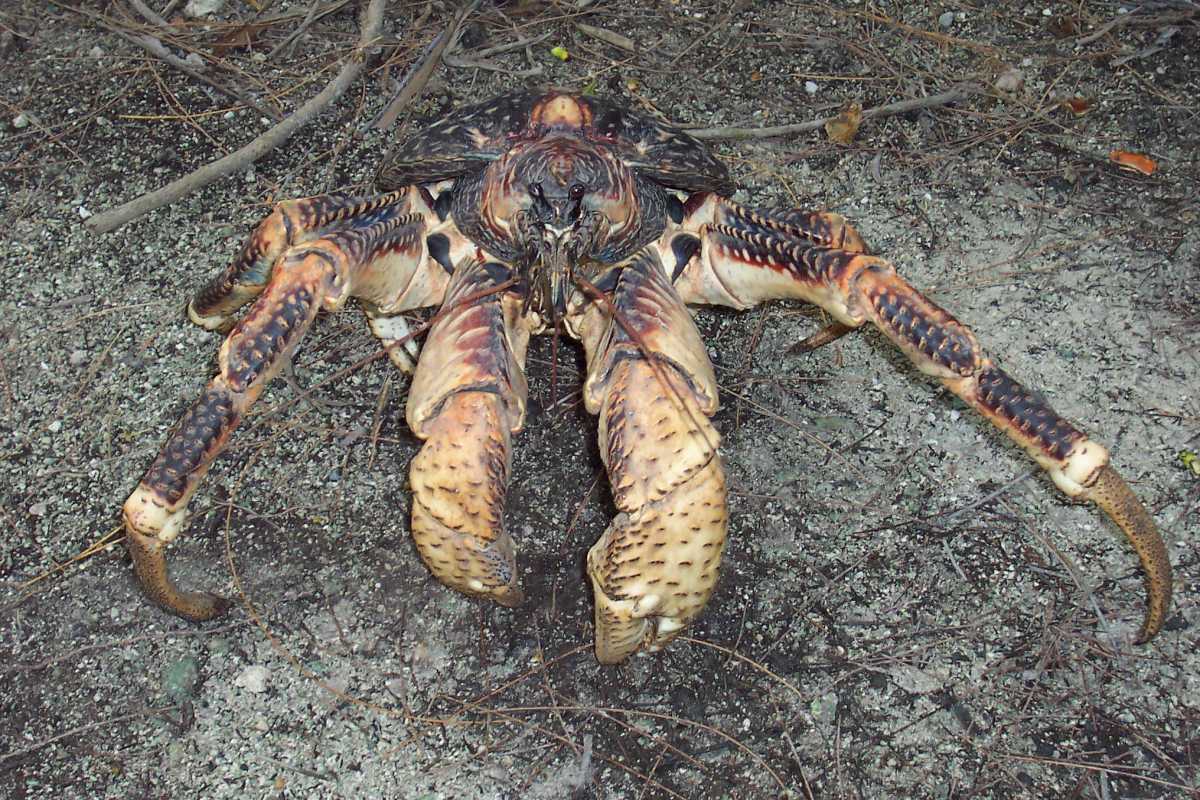
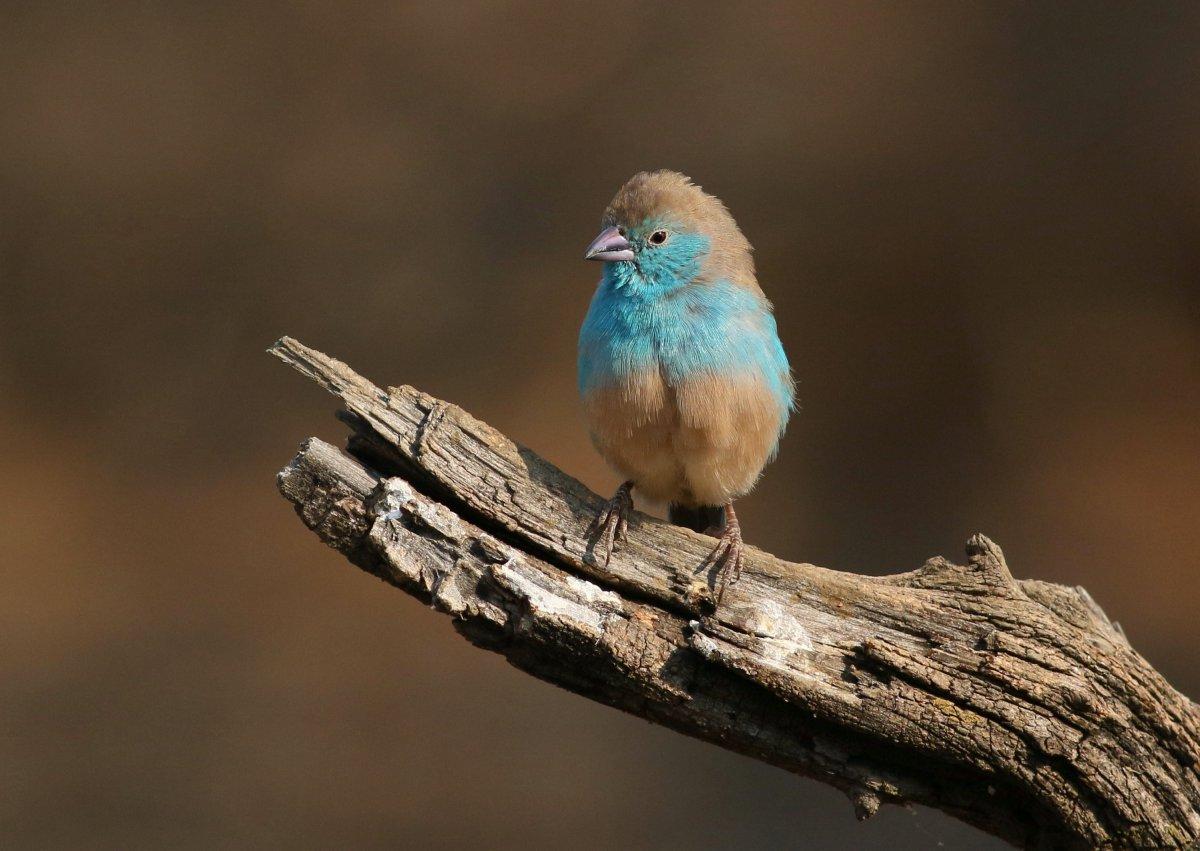
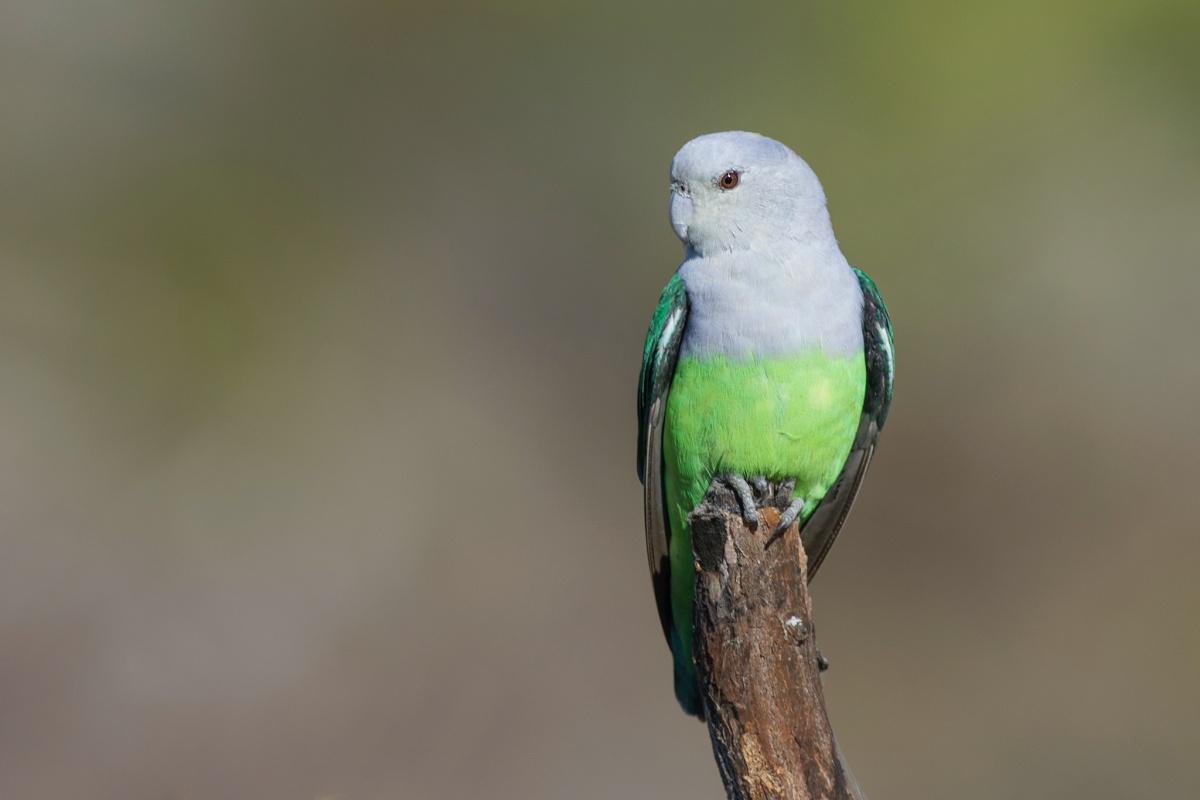

![17 Wild Animals in Siberia [Wildlife in Siberia]](https://www.kevmrc.com/wp-content/uploads/2022/10/17-wild-animals-in-siberia.jpg)
![18 Wild Animals in Laos [Wildlife in Laos]](https://www.kevmrc.com/wp-content/uploads/2022/12/18-wild-animals-in-laos.jpg)
![10 Wild Animals in Micronesia [Wildlife in Micronesia]](https://www.kevmrc.com/wp-content/uploads/2023/01/10-wild-animals-in-micronesia.jpg)